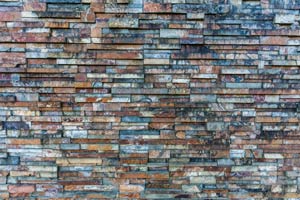Care and Maintenance Guide for Porcelain and Ceramic Tile
This comprehensive guide outlines best practices for cleaning and maintaining your tile, ensuring its lasting appeal for years to come. We've consulted industry standards and best practices to provide you with the most effective care recommendations.
Understanding Your Tile:
Porcelain and ceramic tiles offer distinct advantages. Porcelain tiles, crafted from dense clays and fired at high temperatures, are known for their exceptional strength, resistance to staining, and minimal water absorption. Ceramic tiles, while also durable, may have slightly different characteristics. Regardless of the material, proper care is essential.
Routine Cleaning Protocol (Weekly/Bi-Weekly):
Regular cleaning is the cornerstone of tile maintenance, preventing the buildup of dirt and grime that can dull the surface and scratch the finish.
- Dry Debris Removal: Begin by sweeping, dust mopping, or vacuuming the area with a soft brush attachment. This eliminates loose dirt, dust, and pet hair, preventing it from being ground into the tile surface.
- Neutral pH Cleaning Solution: Use a pH-neutral cleaner specifically designed for tile and grout. Avoid harsh chemicals like bleach, ammonia, acids (vinegar included), and abrasive cleaners. These can damage the tile's glaze and discolor grout. Always consult the cleaner manufacturer's instructions for appropriate dilution ratios.
- Mop Application: Use a lightly dampened mop to apply the cleaning solution. Avoid soaking the grout lines, as excessive moisture can lead to mold or mildew growth.
- Thorough Rinsing: Rinsing is critical. Use clean, potable water to remove all traces of the cleaning solution. Change the rinse water frequently to prevent a film from forming on the tile surface. This step is often overlooked but is crucial for maintaining the tile's shine.
- Drying: Allow the floor to air dry completely. A clean, dry towel can be used to expedite the drying process.
Grout Maintenance (As Needed):
Grout, being more porous than tile, requires more frequent and specialized cleaning.
- Baking Soda Paste: A simple and effective solution is a paste of baking soda and water. Apply it to the grout lines, let it sit for 15-20 minutes, then scrub with a stiff brush (an old toothbrush works well). Rinse thoroughly with clean water.
- Commercial Grout Cleaners: Numerous commercial grout cleaners are available. Choose one specifically designed for your type of grout (epoxy or cementitious). Always test the cleaner in an inconspicuous area first to ensure it doesn't discolor the grout or tile.
- Steam Cleaning (Use with Caution): Steam cleaners can be effective for grout cleaning but use a low setting and keep the nozzle moving to avoid damaging the grout or tile due to excessive heat or moisture.
Stain Removal:
Prompt stain removal is essential to prevent permanent discoloration.
- General Stains: For most stains, warm water and a mild detergent are sufficient. Apply the solution, let it sit for a few minutes, and gently scrub with a soft cloth or brush. Rinse thoroughly.
- Oil-Based Stains: Use a degreasing cleaner designed for tile and grout. Follow the manufacturer's instructions carefully.
- Tough Stains: For stubborn stains like coffee, wine, or juice, try a paste of baking soda and water, or a commercial stain remover designed for tile. Always test in an inconspicuous area first.
- Rust Stains: Use a commercial rust remover specifically formulated for tile. Test in an inconspicuous area before full application.
Preventative Maintenance:
-
Doormats and Rugs: Place doormats at entrances and rugs in high-traffic areas to trap dirt and debris.
- Furniture Pads: Use furniture pads under the legs of furniture to prevent scratches.
-
Prompt Spill Cleanup: Wipe up spills immediately to prevent staining.
- Avoid Standing Water: Prevent water from pooling on the tile surface, especially in grout lines.
- Regular Inspections: Periodically inspect your tile and grout for any signs of damage or discoloration.
Additional Resources:
For more information on tile care and maintenance, consult online resources such as the Tile Council of North America (TCNA) and the National Tile Contractors Association (NTCA). These organizations provide valuable information and industry best practices.


 White
White Beige
Beige Black
Black Blue
Blue Grey
Grey Décor
Décor Brown
Brown Green
Green Metallic
Metallic Brown
Brown Dark Brown
Dark Brown Light Grey
Light Grey Grey
Grey Dark Grey
Dark Grey




